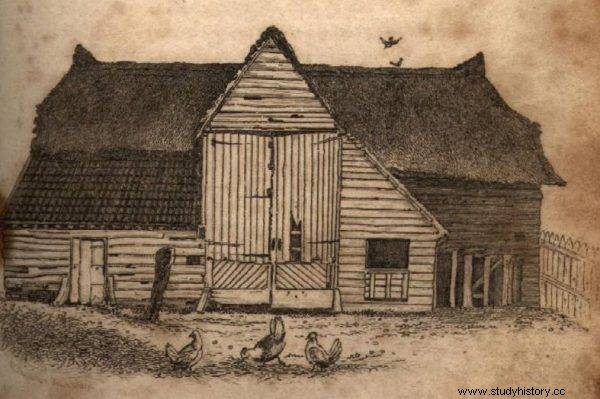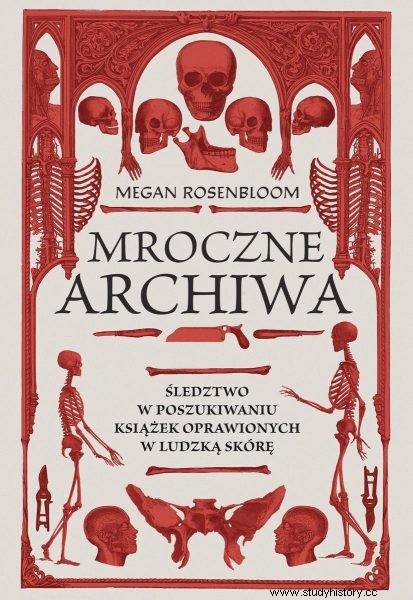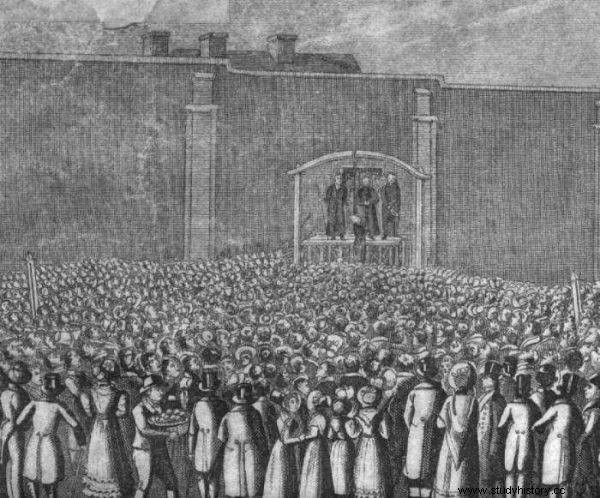Following the search for serial killers, watching accounts of their trials or reading the details of their crimes is gruesome entertainment, but it is not a novelty. For centuries, the public has loved good, gory stories. In the nineteenth century, they did not end with the execution of the perpetrator's sentence. The judiciary of that time went a step further, turning the corpse into a bogey - and another form of entertainment for the public. The best example of this is the case of the Red Barn Killer.
When Maria Marten, the daughter of a poor mole catcher, began an affair with William Corder, the son of a wealthy farmer, she was already the mother of one illegitimate child. The woman was known in the area for her beauty and the charm with which she attracted men. Unfortunately, her relationship with Corder was going to turn out to be the last one in her life.
Their meeting place was the local barn called "Red" by the residents of Polstead in Suffolk. Where does this term come from? From an optical illusion. When the sun was setting behind the building, its last rays created a red aura around the building's body, which made the surrounding population fearful and made most people avoid this place from a distance. This made the Red Barn ideal for a love tryst.
Missing bride
With her new partner, Maria quickly became pregnant again, but the baby died shortly after giving birth. Despite this tragedy, William was to offer the girl an escape from the village and a marriage that would save the couple from legal consequences.
In the England of the early 19th century, cohabitation outside of marriage was imprisoned. Corder told the Martens that the constable was going to arrest Maria for having a child out of wedlock, and offered to flee with him to Ipswich as soon as possible, where they would be legally married . If I go to jail, Maria reminded William, so will you.
On May 18, 1827, the couple met in the Red Barn, from where they planned to continue their journey. As a distraction, Maria donned men's clothes, but she supplemented them with delicate earrings, decorative combs hidden under the hat, and a scarf tied around the neck. In this outfit, she left her family home and went to meet her beloved. It was the last time anyone saw her alive.

Their meeting place was the local barn called "Red" by the residents of Polstead in Suffolk. Where does this term come from? From an optical illusion.
Later, hearing from the woman was almost lost. The rudimentary information about her new life was provided by William during a short visit, but with time Maria's relatives began to be suspicious of these revelations. His excuses, such as the fact that his wife did not write letters because there was a growth on her hand that made it possible to hold the pen, particularly haunted Maria's stepmother, Ann Marten. It was another signal to her that something bad had happened to her stepdaughter. . The woman had also had bad dreams for some time in which she saw the Red Barn and Maria buried in it. In the end, she shared her concerns with her husband, Thomas, who immediately decided to check whether the spouse's dreams were the result of an exaggerated imagination or the truth.
To his horror in the barn, found in a shallow grave buried "his daughter's decaying corpse, with the green handkerchief still tied tightly around her neck. The combs and earrings glistened amidst the rotting insides and exposed limb bones. ”
The woman was attacked with a knife, strangled and shot in the face. Naturally, William Corder became the prime suspect.
The Red Barn Murderer
The man was arrested in London at the family home of his new wife whom he met through an advertisement in the Times. At first, he denied acquaintance with Maria Marten. This, however, did not prevent him from being handcuffed and sent to Bury St Edmunds in Suffolk, where a trial was soon held.
Reporters came from all over the area, and even from London itself, to cover the investigation and court hearings. The brutal and indecent nature of the crime aroused the curiosity of the inhabitants. A preacher drew nearly five hundred onlookers near the Red Barn, denouncing the heinous actions of Corder, who has already come to be referred to as Corder Murderer in local rumors and folk songs . Crowds of visitors were also entertained with the use of a obscure camera and various improvised performances depicting the crime in macabre detail.

The text was created, among others based on the book by Megan Rosenbloom “Dark Archives. An investigation in search of books bound in human skin ”, which has just been published by Znak Literanova. Buy now "
The trial began on August 7, 1828 and attracted amazing crowds. Women, wanting to get a better look at the accused, climbed the roofs of nearby houses. Due to their gender, they could not be present in the courtroom during the trial, but all of them - regardless of the social class to which they belonged - wanted to witness the conviction of a man for such a cruel crime on one of them.The roof of the courthouse was in danger of collapsing under their weight, so the ban on women was lifted at the hearing. The constables throughout the rest of the process made sure that no further antics by the unruly onlookers occurred.
Finally, the sentence was passed. William Corder was sentenced to death by hanging and his body was to be dissected for anatomical examination. The execution was carried out on August 11, 1828.
The Wandering Remains of William Corder
The corpse of the condemned man was barely removed from the gallows, and the crowd watching the execution of the sentence threw himself on the pieces of rope. Collecting memorabilia related to more or less high-profile crimes was a common practice in 19th-century England. The Red Barn became a popular tourist attraction, and people visiting it took part of it with them every time, so the building was quickly left behind. … Demolished because its design was violated.
The remains that were saved were turned into shoe-shaped snuffboxes and other souvenirs, making them desirable among local residents, visitors, collectors and even museum workers, murderabilia.
What happened to William Corder's body? Shortly after his execution, it was incised along the torso to expose the muscles of the deceased's chest.
The body was then exposed to the public:the curious could come over and stare at will. It was a common practice at the time, part of the public humiliation of murderers to deter would-be criminals.

William Corder was sentenced to death by hanging and his body was to be dissected for anatomical examination. The execution was carried out on August 11, 1828.
Following this peculiar exhibition, several death masks and plaster casts were made for phrenological studies. The condemned man's clothing was handed over to the executioner, and the body was transferred to the Suffolk County Hospital, where students could freely examine it, almost taking it apart. William's skin was ultimately to be used as the cover for a book presenting the history of the crimes committed in the Red Barn, and his skeleton was properly prepared and for many years was used as a scientific aid. Ultimately, William Corder's bones were cremated in 2004 at the request of his relative. Unfortunately, this fate was not shared by all the existing remains of the condemned man.
When visiting the Moyse's Hall Museum in Bury St Edmunds, you will come across the Red Barn murder exhibit. At the exhibition, you will see a painted ceramic figurine of the Red Barn, a lantern with which Maria's body was searched, her father's spade to kill moles, Corder's pistols, his death mask or a shoe-shaped snuffbox made of a building board. You'll also find a piece of darkened skin from William's scalp and ears, and a book of his trial, bound in the skin of a condemned man.
